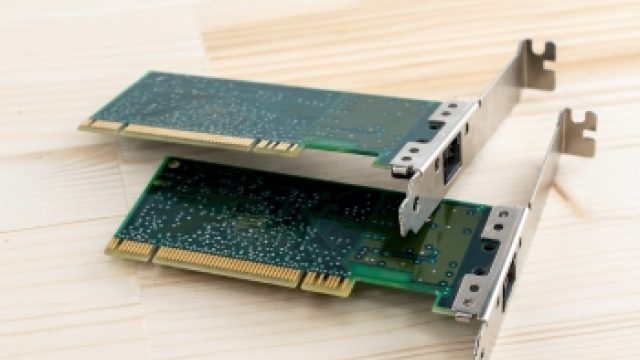Need to escape the digital desert and connect your rig to the web? Fear not, intrepid netizens! Learn how to install a Wi-Fi card in your computer and ride the waves of the cyber realm. Surf’s up, my friend!
Keep reading for a smooth installation ride and seamless streaming bliss!
Preparing for Installation
Before diving into the installation process, it’s essential to select the right WiFi card that suits your needs. Consider factors such as compatibility with your system, network speed requirements, and available features. Research and find a WiFi card that best fits your preferences.
Now that you have your eyes on a potential WiFi card, make sure it is compatible with your computer’s hardware and software. Check the system requirements specified by the card’s manufacturer and ensure your computer meets those criteria.
For a smooth installation, you’ll need the right tools by your side. Gather a screwdriver, anti-static wrist strap (if available), and any other required equipment to make the process hassle-free.
Opening the Computer Case
Safety first! Turn off your computer and unplug it from the power source. This step will protect both you and your computer from any electrical mishaps during the installation.
Every computer case has a unique mechanism to open it. Some cases have screws, while others may have latches or sliding panels. Identify the opening mechanism and proceed accordingly.
With caution, open the computer case using the identified method. Be mindful of any cables or components that may get in the way and gently move them aside.
Identifying the Expansion Slots
Computers typically come with various expansion slots, such as PCIe, PCI, and more. Familiarize yourself with these different slot types to understand which one your WiFi card requires.
Now, identify the expansion slots within your computer. These slots are usually located near the back of the case and are where you will insert the WiFi card.
Based on your WiFi card’s specifications and your computer’s available slots, choose the most suitable one for your card’s installation.
Related Article: Best Computer for Finance Majors
Installing the WiFi Card
Before inserting the WiFi card into the chosen slot, ensure it is free from any dust or debris. Keeping it clean will enhance its performance and longevity.
Carefully align the WiFi card’s connectors with the expansion slot. Make sure it sits perfectly and does not force it into place.
With a gentle and steady hand, insert the WiFi card into the slot. Use slight pressure to fit it snugly into place.
Some expansion slots have locking mechanisms. If your WiFi card slot has one, secure the card in place using the appropriate locking method.
Connecting Antennas (if Applicable)
Antennas play a crucial role in receiving wireless signals and maintaining a stable connection. Understand their importance before proceeding.
Locate the antenna connectors on your WiFi card. They are usually small, threaded connectors designed to attach the antennas.
Carefully attach the antennas to their corresponding connectors on the WiFi card. Make sure they are tightly screwed in for optimal signal reception.
Closing the Computer Case
Before sealing the case, double-check for any loose cables or components inside the computer. Secure them properly to prevent potential issues.
Gently close the computer case and ensure the opening mechanism is correctly fastened. This will keep your components safe and secure.
Once the case is closed, reconnect all external cables, including power, monitor, keyboard, and mouse.
Powering Up the Computer
Power on your computer and enter the BIOS/UEFI setup by pressing the designated key during the boot process (usually shown on the screen).
Once in the BIOS/UEFI, verify whether the WiFi card is detected and recognized by the system. This step ensures that the card is properly installed.
Installing WiFi Card Drivers
To optimize the WiFi card’s performance, download the latest drivers from the manufacturer’s official website.
Follow the instructions provided with the driver download to install the software on your computer.
If your WiFi card requires specific configurations, adjust the settings as needed to maximize its capabilities.
Related Article: Top 7 Best Laptops for Anno 1800 (for Crazy Gaming Speed!)
Testing the WiFi Connection
Test the WiFi connection to ensure the card is functioning as expected.
Connect to your wireless network to gauge the card’s performance and connection stability.
Verify that the signal strength is stable and strong, allowing for smooth internet access.
Troubleshooting Tips
Explore common problems that may arise during WiFi card installation and how to address them.
Learn how to troubleshoot driver conflicts and connectivity issues to maintain a reliable WiFi connection.
Updating WiFi Card Firmware (if Applicable)
Learn about the significance of firmware updates and how they enhance your WiFi card’s performance.
Check for any available firmware updates and follow the instructions to install them.
Maintaining the WiFi Card
Regularly clean the WiFi card to prevent dust buildup, which can affect its performance.
Perform routine checks to ensure all connections are secure, preventing any disruptions.
Handle the WiFi card with care and avoid any physical damage during installation or maintenance.
Upgrading the WiFi Card (Optional)
Understand the benefits of upgrading to a new WiFi card and how it can enhance your overall computing experience.
If you decide to upgrade, follow the same installation process with the new WiFi card to improve your system’s wireless capabilities.
FAQs About How To Install Wifi Card
Is a Wi-Fi card easy to install?
Installing a Wi-Fi card can be relatively straightforward, especially for those familiar with computer hardware.
Most Wi-Fi cards are designed to fit into PCIe slots on desktop motherboards. With the right drivers, the process can be seamless, but it might require a bit of technical knowledge for beginners.
Can you add a Wi-Fi card to any motherboard?
In general, you can add a Wi-Fi card to any motherboard that has an available PCIe slot. Most modern motherboards come with PCIe slots, making them compatible with Wi-Fi card installation.
However, it’s essential to check your motherboard’s specifications to ensure compatibility.
Do you need to install drivers for a Wi-Fi card?
Yes, you typically need to install drivers for a Wi-Fi card to ensure it functions correctly. These drivers enable communication between the operating system and the hardware.
Fortunately, most Wi-Fi cards come with installation discs, and many operating systems can automatically detect and install the necessary drivers.
Can I put a Wi-Fi card in my laptop?
In most cases, laptops have built-in Wi-Fi capabilities and do not require an additional Wi-Fi card.
However, some older laptops or specific models may have a mini PCIe slot or M.2 slot, allowing you to upgrade or replace the existing Wi-Fi card if needed.
Can we install Wi-Fi driver in PC?
Yes, you can install Wi-Fi drivers on a PC to enable Wi-Fi connectivity.
After inserting the Wi-Fi card into the motherboard and booting up the PC, you’ll need to install the drivers either from the installation disc provided with the card or by downloading the latest drivers from the manufacturer’s website.
How do I find my Wi-Fi card driver?
To find the Wi-Fi card driver, you can access the “Device Manager” on your PC. Right-click on “This PC” or “My Computer,” select “Properties,” and then click on “Device Manager.” Look for the “Network Adapters” section, where you’ll find the Wi-Fi card listed. Right-click on it, choose “Properties,” go to the “Driver” tab, and there you’ll find driver details.
Are all Wi-Fi cards compatible?
No, not all Wi-Fi cards are compatible with every system. Compatibility depends on factors like the type of PCIe slot available on the motherboard, driver support for the operating system, and physical space within the PC case.
It’s crucial to verify compatibility with your specific hardware before purchasing a Wi-Fi card.
How do I turn on Wi-Fi in BIOS?
The Wi-Fi functionality is typically enabled in the BIOS by default. However, if you encounter any issues or find that Wi-Fi is disabled, you can access the BIOS during system startup by pressing a specific key (often Del, F2, F10, or Esc, depending on your motherboard) and navigate to the “Advanced” or “Integrated Peripherals” section to enable Wi-Fi.
What is a Wi-Fi card in PC?
A Wi-Fi card, also known as a wireless network adapter or Wi-Fi adapter, is a hardware component that enables a computer to connect to wireless networks.
It allows the PC to send and receive data over Wi-Fi, providing wireless internet connectivity and freeing the user from relying solely on wired connections.
Is a Wi-Fi card faster than USB?
In general, a Wi-Fi card installed directly into a PCIe slot can provide faster and more stable wireless internet speeds compared to a USB Wi-Fi adapter.
The direct connection to the motherboard allows for better communication and higher bandwidth, resulting in improved performance for tasks like online gaming and large file transfers.
Is a Wi-Fi card faster than Ethernet?
No, a Wi-Fi card is generally not faster than a wired Ethernet connection. While modern Wi-Fi standards have improved wireless speeds significantly, they still can’t match the maximum speeds offered by a wired Ethernet connection.
Ethernet provides a more stable and consistent connection, making it preferable for high-bandwidth applications or low-latency requirements.
Final Thoughts About How To Install Wifi Card
Installing a Wi-Fi card can seem daunting, but with proper preparation, it becomes a manageable task. Ensure compatibility by checking your motherboard specifications and available PCIe slots.
Prior to installation, power down your system and take necessary precautions to prevent static discharge. Insert the card firmly into the designated slot and secure it in place.
After reassembling your PC, power it up and install the required drivers. While it may require technical know-how, it’s a rewarding upgrade that grants wireless connectivity, freeing you from wired limitations. If unsure, seek guidance from manuals or online tutorials for a seamless and successful Wi-Fi card installation.


